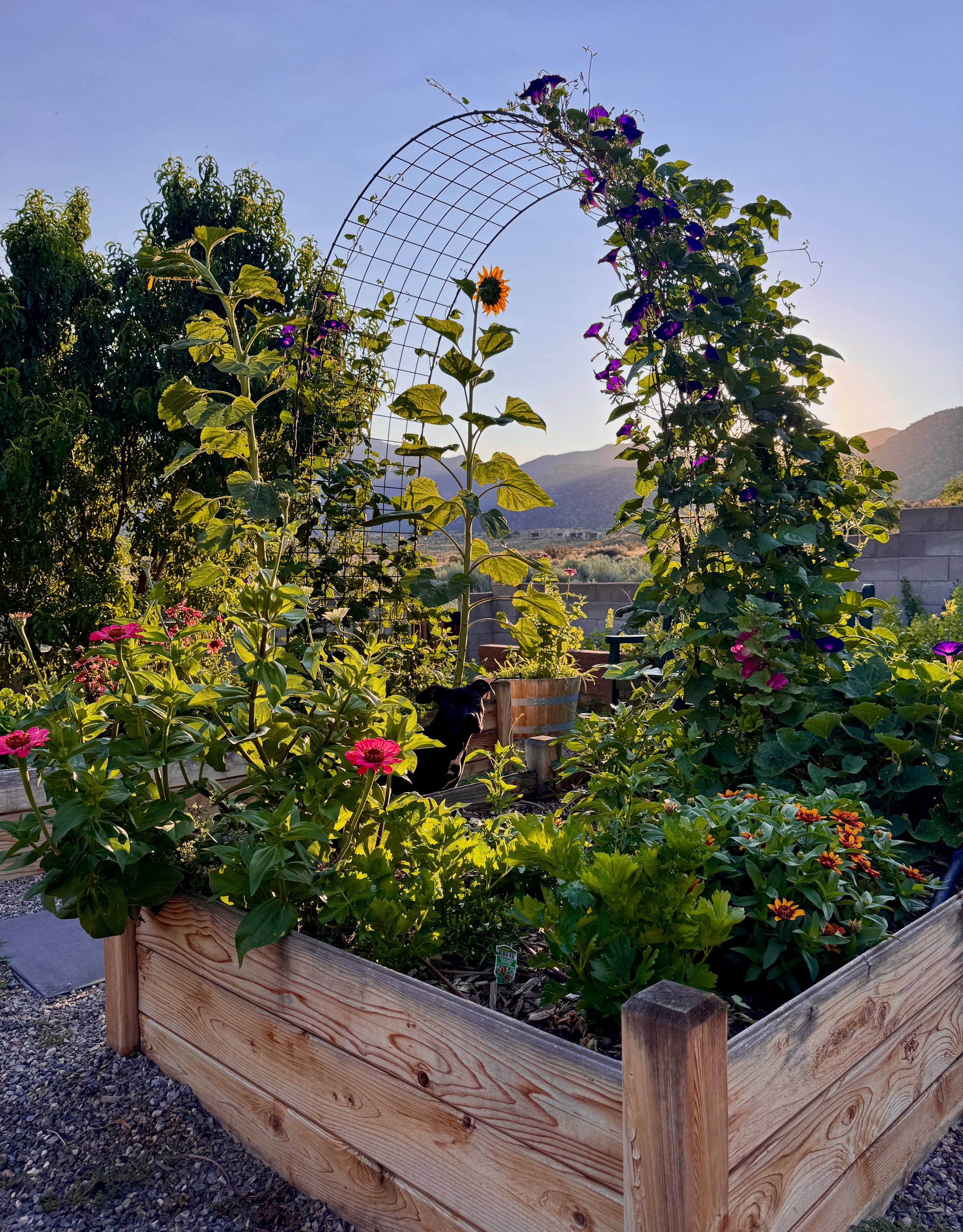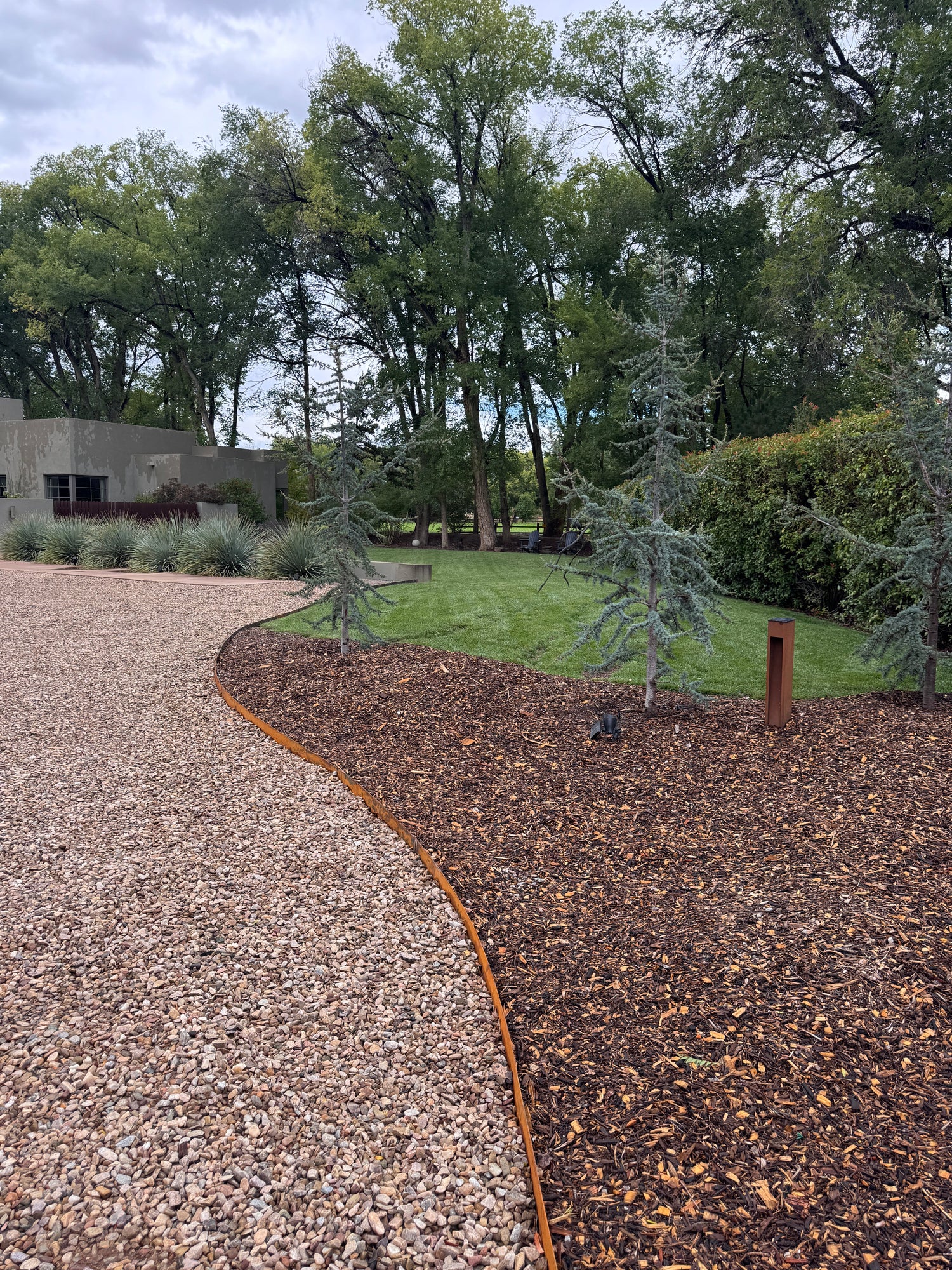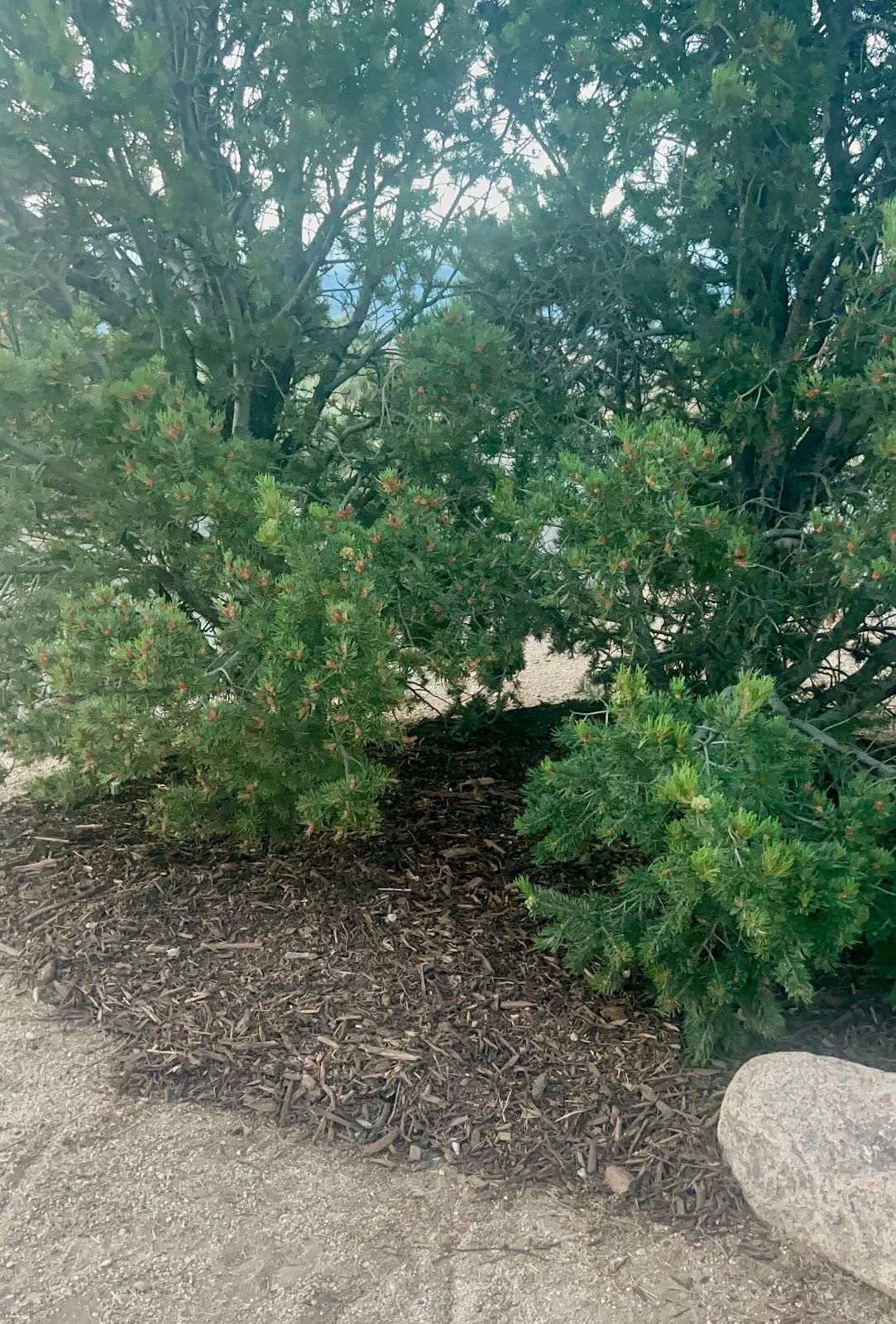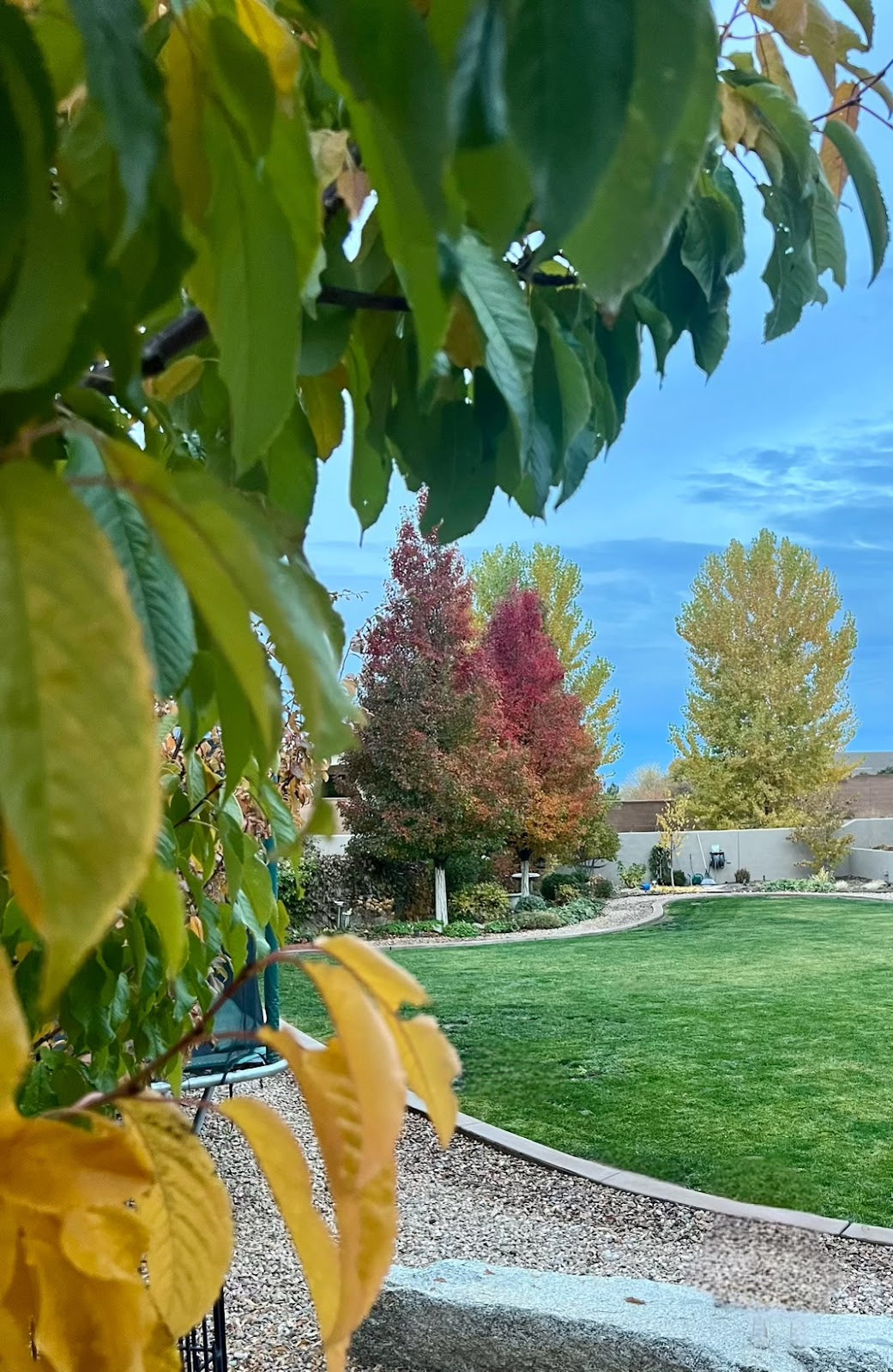Gardening in the high desert is no easy task—and our unique climate can really challenge your summer vegetable-growing success. But with a bit of know-how and some thoughtful precautions, you can greatly improve your chances of an abundant harvest. Let’s dig into what your garden needs as temperatures climb.
☀️ Keep Your Veggies Well-Watered
-
Water daily. In our hot, arid climate, annual vegetables need consistent moisture to thrive. Daily irrigation helps prevent issues like tomato cracking caused by inconsistent soil moisture.
-
Morning watering is best. Early-day watering maximizes soil absorption and sets plants up to face the heat of the day with the hydration they need.
-
Focus on the roots. Direct water to the soil—avoid wetting foliage and stems. This minimizes humidity around the plant canopy, reducing the risk of fungal plant diseases.
Mulch: Your Soil’s Sun Shield
If your garden bed doesn’t already have a healthy layer of mulch—or if existing mulch is thinning—add more now! Mulch acts like sunscreen for your soil by adding an essential layer of protection. It helps retain moisture, moderates temperature extremes, and supports soil microbe health. We recommend our Forest Floor Mulch for veggie gardens —it contains about 10% compost, releasing nutrients slowly to support your crops all season long!
Watch Out for Sun Scorch 🔥
(Tomatoes and peppers are susceptible to sun scorching)
High-elevation sun and intense UV can lead to sun scorch—dark, damaged patches on peppers, tomatoes, and other sun-sensitive fruits. If you notice spots like these, act immediately: install shade cloth to protect your plants from peak sun. You’ll preserve both plant health and fruit quality.
High Heat = Slow Growth
When daily highs consistently exceed 86°F—and especially above 90°F—you may notice stunted growth. Why? Extreme heat stresses the plant’s core processes: photosynthesis falters, respiration gets out of balance, flower drop increases, and fruit production can stall completely. Don’t worry: once nighttime temps decrease and soil begins to cool, your plants should restart their growth momentum—provided you’ve kept up the daily watering routine!
(This tomato has experienced flower drop due to high heat in New Mexico at the end of July)
Beware of Hot 🥵 Raised Beds
Metal raised beds have become popular for their clean look and ease of installation. But metal conducts heat, and soil within these beds—especially near the edges—can easily exceed 85°F. That’s too hot for healthy root growth. If using metal beds, consider planting your crops near the center of the bed and away from the edges.
Conclusion 🌿
High-desert summer gardening isn’t without its challenges—but with consistency, strategy, and a few simple adjustments, you can grow thriving vegetables even under the heat. Keep your water schedule regular, mulch deeply, protect plants from intense sun, and monitor soil temperatures—especially in metal beds.
By staying vigilant and adapting to our unique climate, you’re not just enduring the desert heat—you’re mastering it. Here’s to a bountiful summer harvest!





